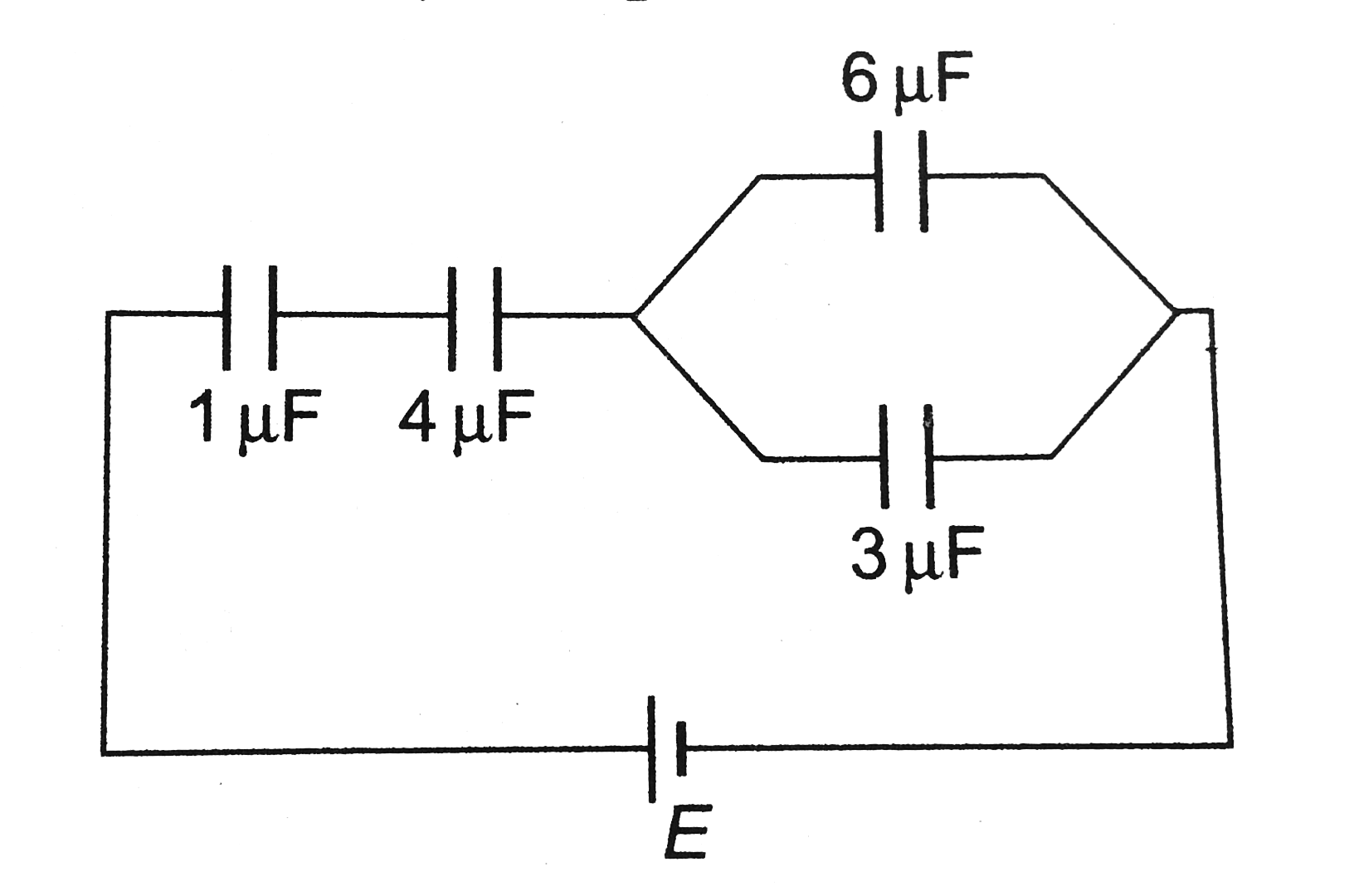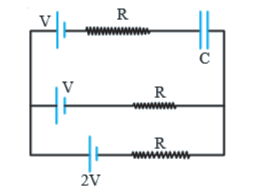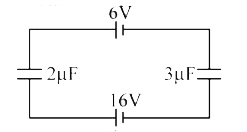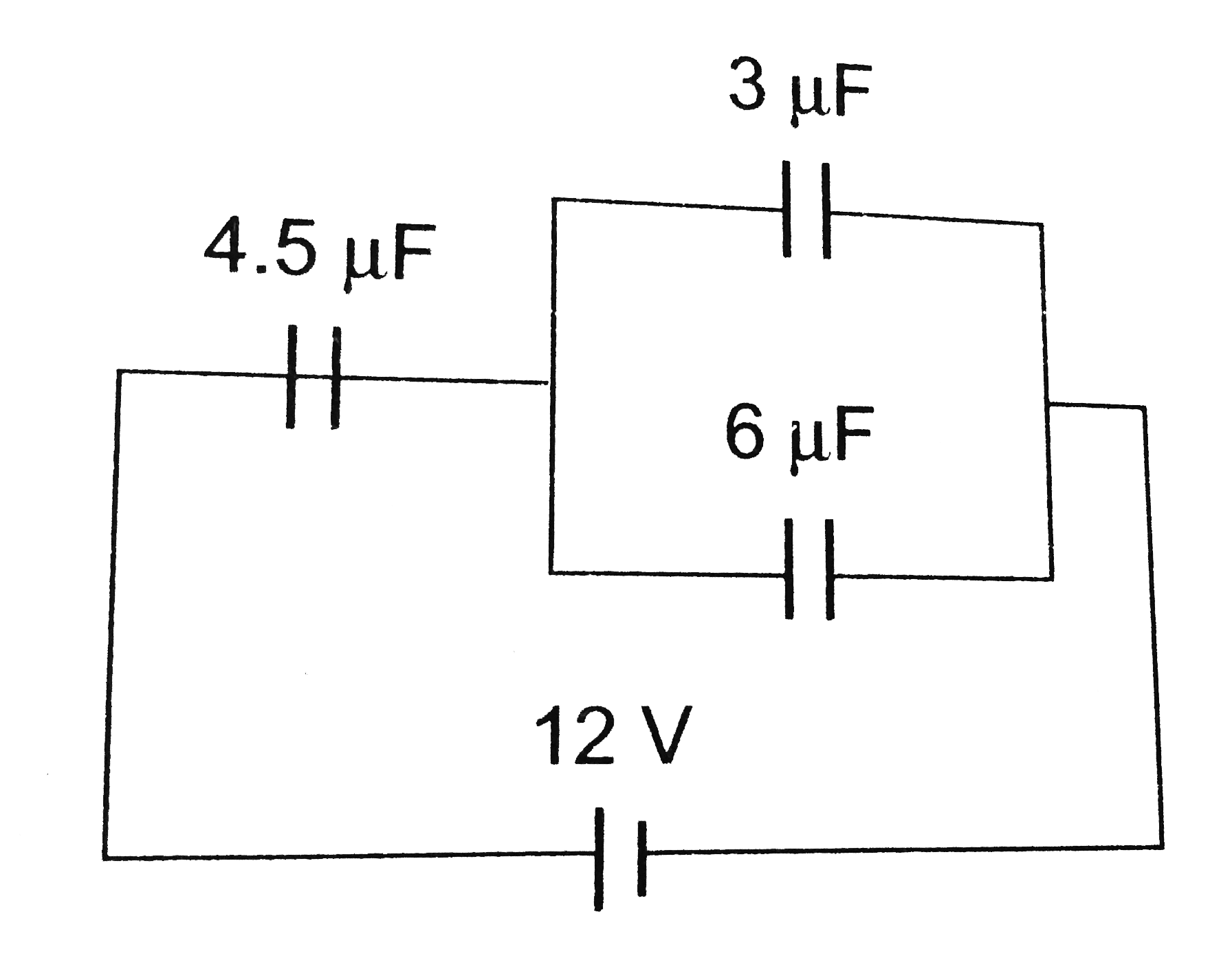The 500μF capacitor is charged at a steady rate of 100μC/s. The potential difference across the capacitor will be 10 V after an interval of
5 s
25 s
20 s
50 s
The correct Answer is:D
To solve the problem, we need to find out how long it will take for a 500µF capacitor to reach a potential difference of 10V when it is charged at a steady rate of 100µCs.
1. Understand the relationship between charge, capacitance, and potential difference:
The formula relating charge (Q), capacitance (C), and potential difference (V) is given by:
\(
Q = C \times V
\)
Where:
- \( Q \) is the charge in coulombs (C),
- \( C \) is the capacitance in farads (F),
- \( V \) is the potential difference in volts (V).
2. Convert the capacitance to farads:
Given:
\(
C = 500 \, \mu F = 500 \times 10^{-6} \, F = 5 \times 10^{-4} \, F
\)
3. Calculate the charge required for a potential difference of 10 V:
Using the formula from step 1:
\(
Q = C \times V = (5 \times 10^{-4} \, F) \times (10 \, V) = 5 \times 10^{-3} \, C = 5000 \, \mu C
\)
4. Determine the time required to charge the capacitor:
We know the charging rate is \( 100 \, \mu C/s \). We can use the formula:
\(
Q = \text{Rate} \times \text{Time}
\)
Rearranging gives:
\(
\text{Time} = \frac{Q}{\text{Rate}} = \frac{5000 \, \mu C}{100 \, \mu C/s}
\)
5. Calculate the time:
\(
\text{Time} = \frac{5000}{100} = 50 \, s
\)
Thus, the potential difference across the capacitor will be 10V after an interval of 50 seconds.
Final Answer:
The time interval required is 50 seconds.
The formula relating charge (Q), capacitance (C), and potential difference (V) is given by:
\(
Q = C \times V
\)
Where:
- \( Q \) is the charge in coulombs (C),
- \( C \) is the capacitance in farads (F),
- \( V \) is the potential difference in volts (V).
Given:
\(
C = 500 \, \mu F = 500 \times 10^{-6} \, F = 5 \times 10^{-4} \, F
\)
Using the formula from step 1:
\(
Q = C \times V = (5 \times 10^{-4} \, F) \times (10 \, V) = 5 \times 10^{-3} \, C = 5000 \, \mu C
\)
We know the charging rate is \( 100 \, \mu C/s \). We can use the formula:
\(
Q = \text{Rate} \times \text{Time}
\)
Rearranging gives:
\(
\text{Time} = \frac{Q}{\text{Rate}} = \frac{5000 \, \mu C}{100 \, \mu C/s}
\)
\(
\text{Time} = \frac{5000}{100} = 50 \, s
\)
The time interval required is 50 seconds.
Topper's Solved these Questions
- ELECTROSTATIC POTENTIAL AND CAPACITORSBOOK - DC PANDEY ENGLISHCHAPTER - ELECTROSTATIC POTENTIAL AND CAPACITORSEXERCISE - Check point 2.5
20 Videos
- ELECTROSTATIC POTENTIAL AND CAPACITORSBOOK - DC PANDEY ENGLISHCHAPTER - ELECTROSTATIC POTENTIAL AND CAPACITORSEXERCISE - (A) Chapter exercises
227 Videos
- ELECTROSTATIC POTENTIAL AND CAPACITORSBOOK - DC PANDEY ENGLISHCHAPTER - ELECTROSTATIC POTENTIAL AND CAPACITORSEXERCISE - Check point 2.3
15 Videos
- ELECTROMAGNETIC WAVESBOOK - DC PANDEY ENGLISHCHAPTER - ELECTROMAGNETIC WAVESEXERCISE - Sec C
22 Videos
- ELECTROSTATICSBOOK - DC PANDEY ENGLISHCHAPTER - ELECTROSTATICSEXERCISE - Medical entrances gallery
37 Videos
Similar Questions
given that potential differene across 1μF capacitor is 10V. Then,

View SolutionThe potential drop across 7μF capacitor is 6V. Then

View SolutionIn the given circuit, with steady current, the potential difference across the capacitor is

View SolutionIn the adjoning figure, the potential difference across the 4.5μF capacitor is

View SolutionWhat is the potential difference across 2μF capacitor in the circuit shown?

View SolutionIn the given circuit, the potential difference across the 6μF capacitor in steady state is

View SolutionFind charge on each capacitor and potential difference across each capacitor .

View SolutionThe charge on the 4μF capacitor in the steady state is

View SolutionIn the circuit shown in the figure, the potential difference across the 4.5μF capacitor is

View SolutionA capacitor is charged steadily from a DC source. Correct variation of potential difference across the plates of capacitor with charge on the plates of capacitor is
View Solution
